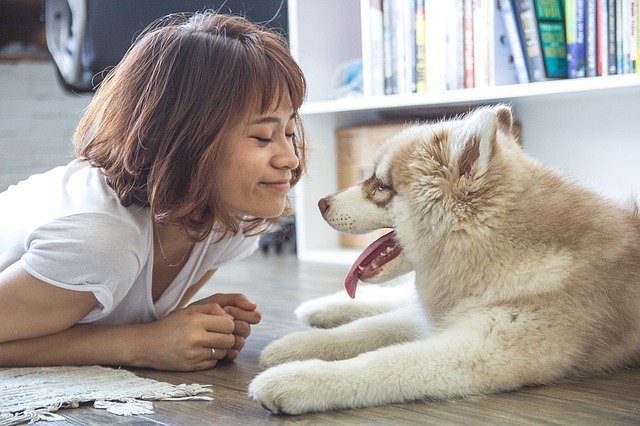When you’re in bed with the flu or grieving the loss of a loved one, your dog seems to understand your emotions in a way that doesn’t require words.
Dogs are experts at making us feel better when we’re sad, but scientists believe sadness isn’t the emotion dogs respond to best. On the opposite side of the spectrum, dogs love it when their humans are happy. Happy humans play games, give praise, and pass out treats.
Some of the reasons why dogs prefer their person to be in a good mood are slightly selfish, but dog owners know there’s more to it than that. According to a scientific study published in bioRxiv, dogs respond to human happiness in more significant ways than any other emotion.

Scientists conducted a series of experiments to measure canine brain activity in response to observing human emotion. It’s already known dogs are capable of discerning the difference between a happy face and an angry face. They look for specific emotional cues on the person’s face and interpret the feeling to know how they should respond. What scientists wanted to know with this study is whether or not there are specific neural mechanisms that help dogs decipher what they’re seeing.
To find out, researchers trained a group of eight dogs to lie calmly in a functional MRI machine. They were unconstrained by leashes and kept comfortable. When they were settled, someone showed the dogs pictures of strangers with either happy or neutral expressions. They ran the test several times using pictures of people of the same gender as the dogs’ primary caretaker. After reviewing the fMRI images of the dogs’ brains, scientists found something the dogs had in common: there was a distinct neurosignature in the dogs’ temporal lobe and other neural regions that lit up in response to pictures of happiness.

In the next set of tests, the dogs were shown images of people expressing either happiness, anger, fear, or sadness. The neurosignature representing happiness stayed the same, but scientists could not pick up on separate signatures for the other emotions. The happiness response was so distinct, a machine learning program could analyze the brain scans and pick out exactly when the dog was looking at a picture of a person smiling.
This doesn’t mean dogs can’t tell the difference between a person who is afraid and a person who is angry, but it indicates happiness has a stronger effect on the canine brain. The next time you want to know what’s going on inside your dog’s head, try giving them a big smile. You’ll know that just by looking at you, their brain is processing your emotion in a special way.
h/t: Science Magazine
Feature Photo by Tucker Good on Unsplash
